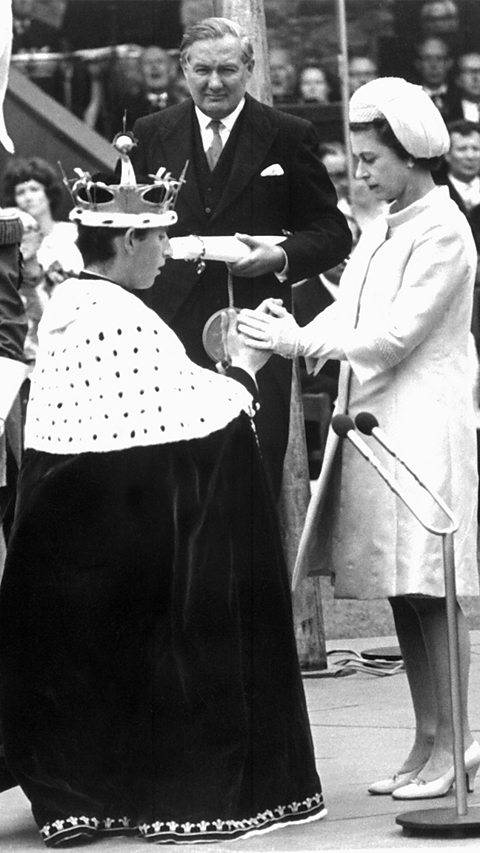Illegal direct action in Wales
The investiture bombings

The then Prince Charles was given the title of Prince of Wales at a formal investitureA ceremony where someone is formally given a title. ceremony on 1 July 1969 at Caernarfon Castle. Some of the younger supporters of Plaid CymruPolitical party in Wales. and Cymdeithas yr Iaith Gymraeg (The Welsh Language Society) strongly opposed the investiture. The prince received threats from extreme nationalist groups.
Members of a small secret organisation called Mudiad Amddiffyn Cymru (The Movement for the Defence of Wales) attempted to plant bombs to explode on the railway line used by the royal train. However, the bomb exploded as the bombers were taking it to the railway line in Abergele, Conwy, killing two of the conspirators.
Tryweryn
Nationalist groups also opposed the flooding of the Tryweryn valley to make way for a reservoir to serve Liverpool. The village of Capel Celyn was one of the areas flooded. This village was a purely Welsh-speaking, traditional community.
Nationalists such as Mudiad Amddiffyn Cymru saw the flooding of the valley as an attack on the Welsh language and traditions. Bombs were planted to cause disruption, and groups attacked Government property.
Meibion GlyndƔr
In the 1980s and 1990s, properties in Wales were firebombed by members of Meibion GlyndƔr. Between 1979 and 1991, 228 properties were attacked.
No-one was killed or seriously injured as most of the properties were empty at the time. Sion Aubrey Roberts was the only person to be convicted for these attacks. He was sentenced to 12 years in prison in 1993 for sending incendiary devices in the post to police and Government officials.